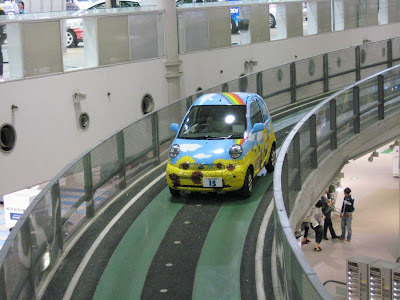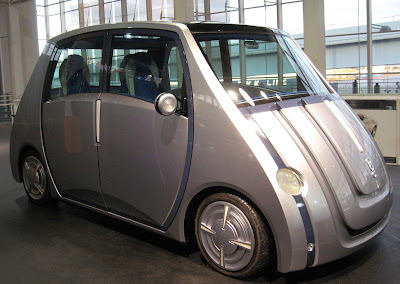Yokohama became the base of foreign trade in Japan, and in 1861 sprouted Japan's first English language newspaper. Foreigners occupied a moat-surrounded district.
It seems strange to me that Yokohama residents now celebrate the 150th anniversary of the arrival of foreign warships making demands upon Japan, but they do.
 At the celebration I saw a chalk painting by American artist Kurt Wenner. Wenner's art is known for its 3D effect which causes it to appear to float. Due to the heavy rain the picture was covered with plastic, but it still was amazing. When viewed from this side, it appears 3D but from the other side it looks very distorted.
At the celebration I saw a chalk painting by American artist Kurt Wenner. Wenner's art is known for its 3D effect which causes it to appear to float. Due to the heavy rain the picture was covered with plastic, but it still was amazing. When viewed from this side, it appears 3D but from the other side it looks very distorted. Unrelatedly, my boss gave me a box of sweets from Japan's city called Obama, which is capitalizing on the fame of the American president. Obama is really a small city, but is trying to make a name for itself!
Unrelatedly, my boss gave me a box of sweets from Japan's city called Obama, which is capitalizing on the fame of the American president. Obama is really a small city, but is trying to make a name for itself!
 In addition to parasols, people also use gloves, etc., for UV protection. Such contrast to our current attitude toward the sun in the U.S., although we too used parasols not so long ago. Nonetheless, I still love being in the sun!
In addition to parasols, people also use gloves, etc., for UV protection. Such contrast to our current attitude toward the sun in the U.S., although we too used parasols not so long ago. Nonetheless, I still love being in the sun!














 The car navigates its own way around the course. Below, the car is driving but nobody is in it. I'm not sure how it does this.
The car navigates its own way around the course. Below, the car is driving but nobody is in it. I'm not sure how it does this. We saw some more cool cars.
We saw some more cool cars.








 This sign is in Japanese, Chinese, Korean and English, and the sign below offers tourist information officers speaking all of those languages. I am amazed at how many different writing systems there are in the world.
This sign is in Japanese, Chinese, Korean and English, and the sign below offers tourist information officers speaking all of those languages. I am amazed at how many different writing systems there are in the world.




